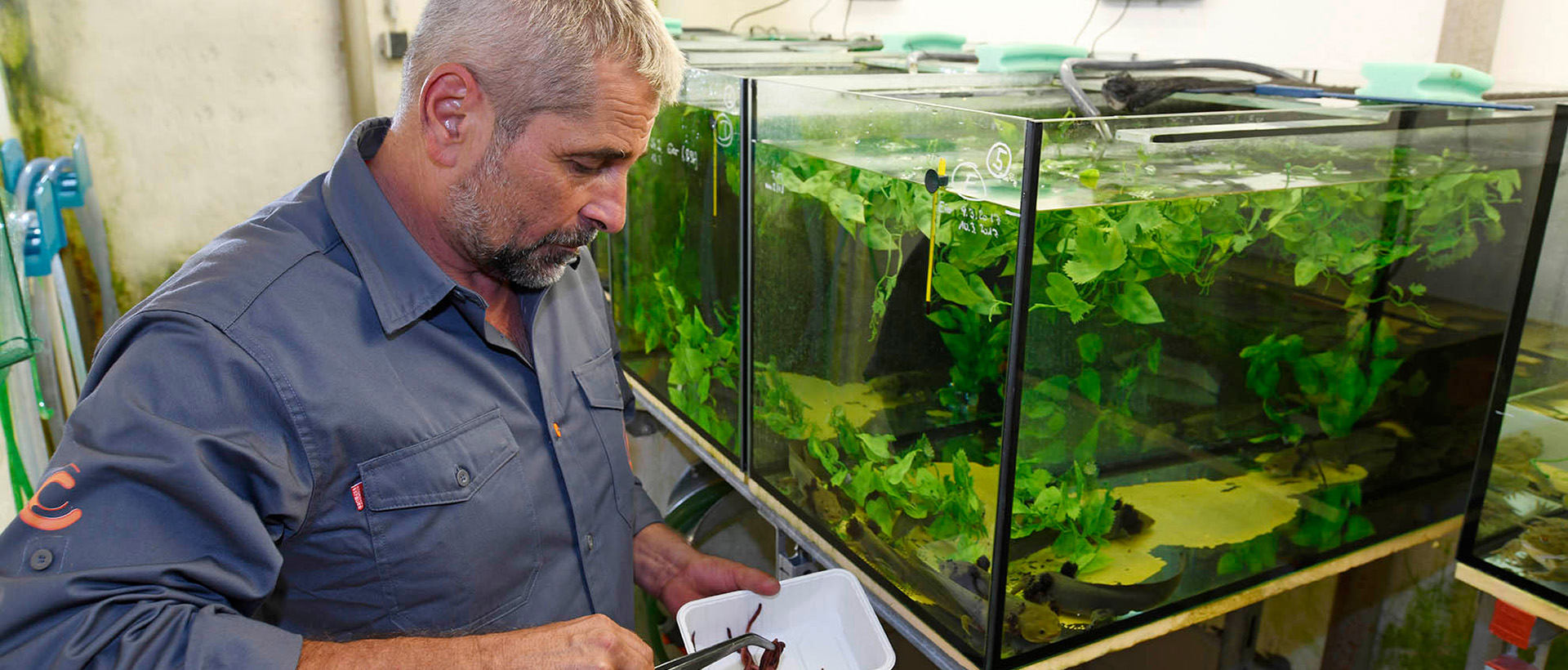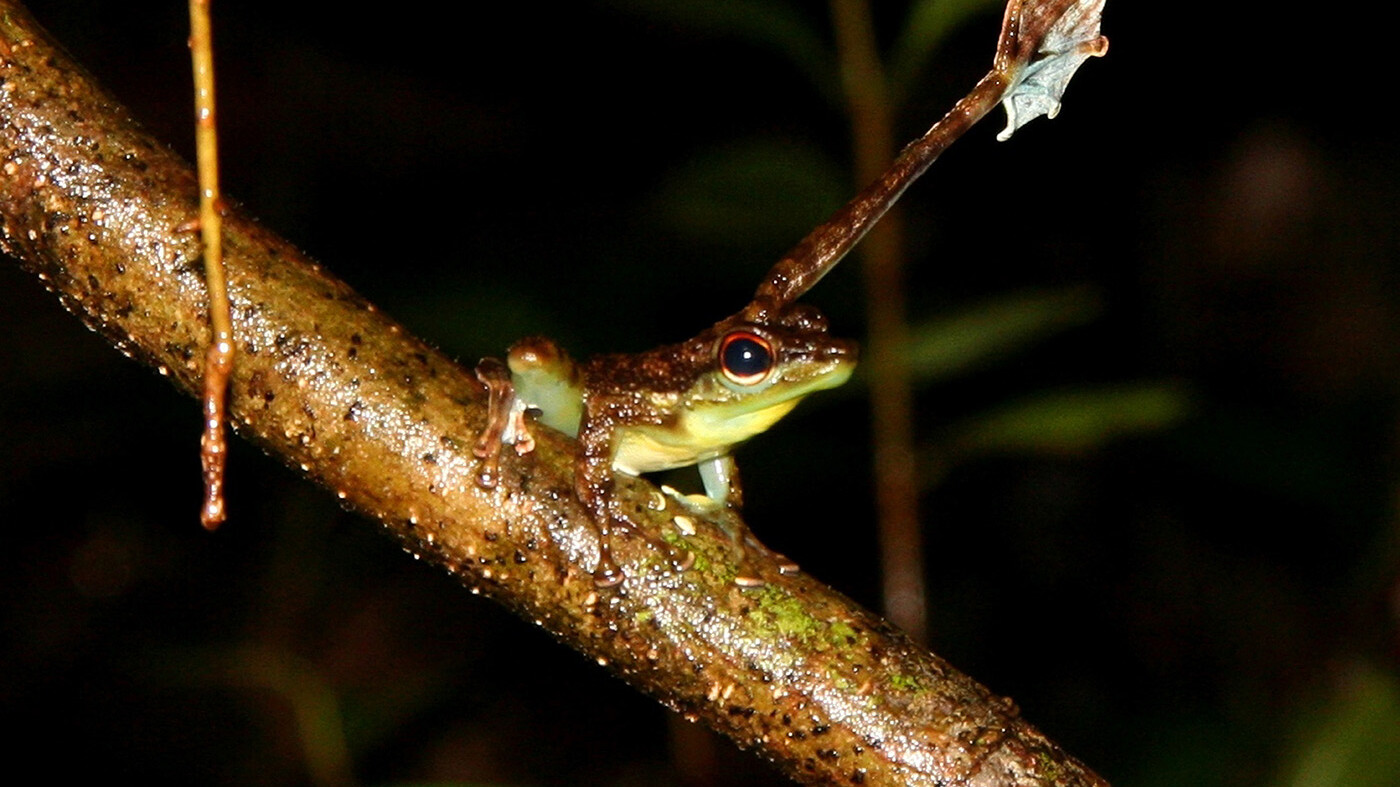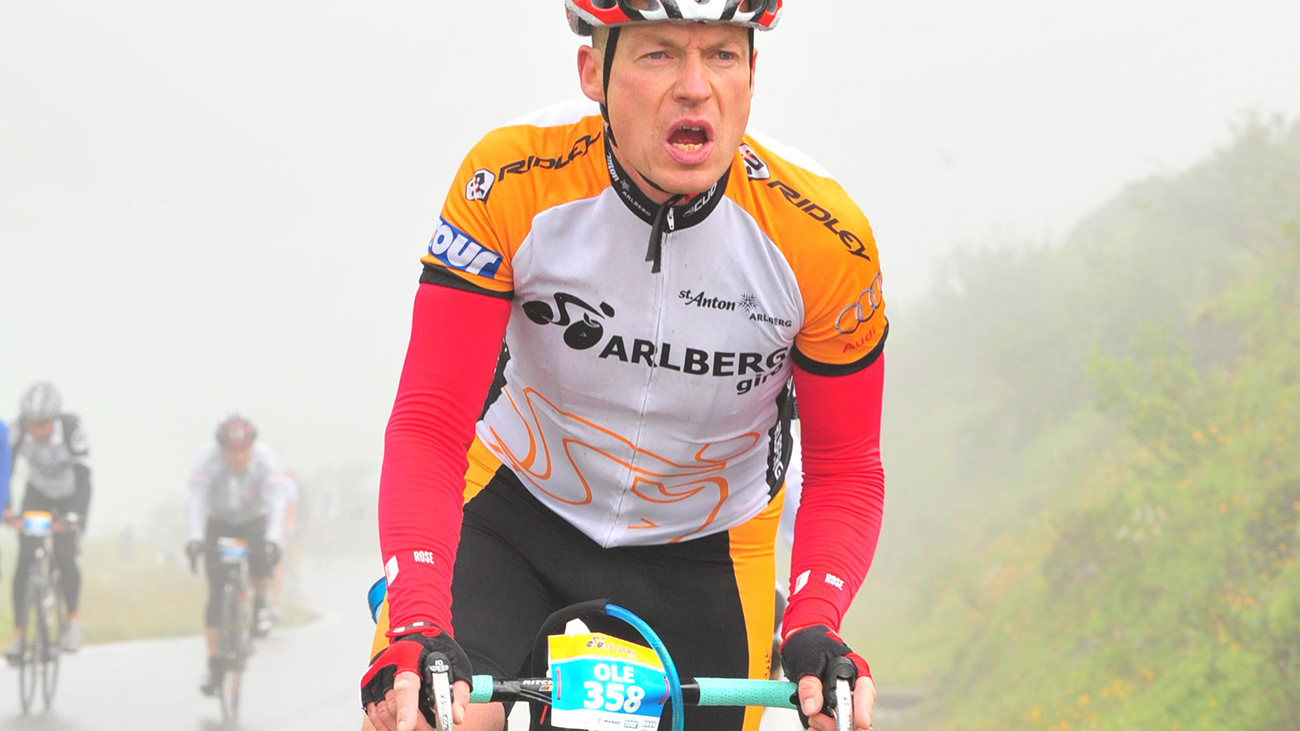
From Pátzcuaro to Schönbrunn
Doris Preininger and Thomas Wampula in the Vienna zoo Tiergarten Schönbrunn are a perfect example of how modern zoos can meet today’s challenges. They don’t just use their space to display animals to the public, but also to accomplish practical conservation and research – albeit in a cool, damp cellar.
Lake Pátzcuaro Salamanders relax and enjoy themselves in their aquariums in Schönbrunn. In their natural habitat, they would long since have died from water pollution, been eaten by imported predatory fish, or been caught by fishermen. That’s why there are practically no salamanders left in Lake Pátzcuaro. In Vienna, on the other hand, they are harbored and cared for to ensure the survival of their species.
Doris and Thomas in action for endangered species
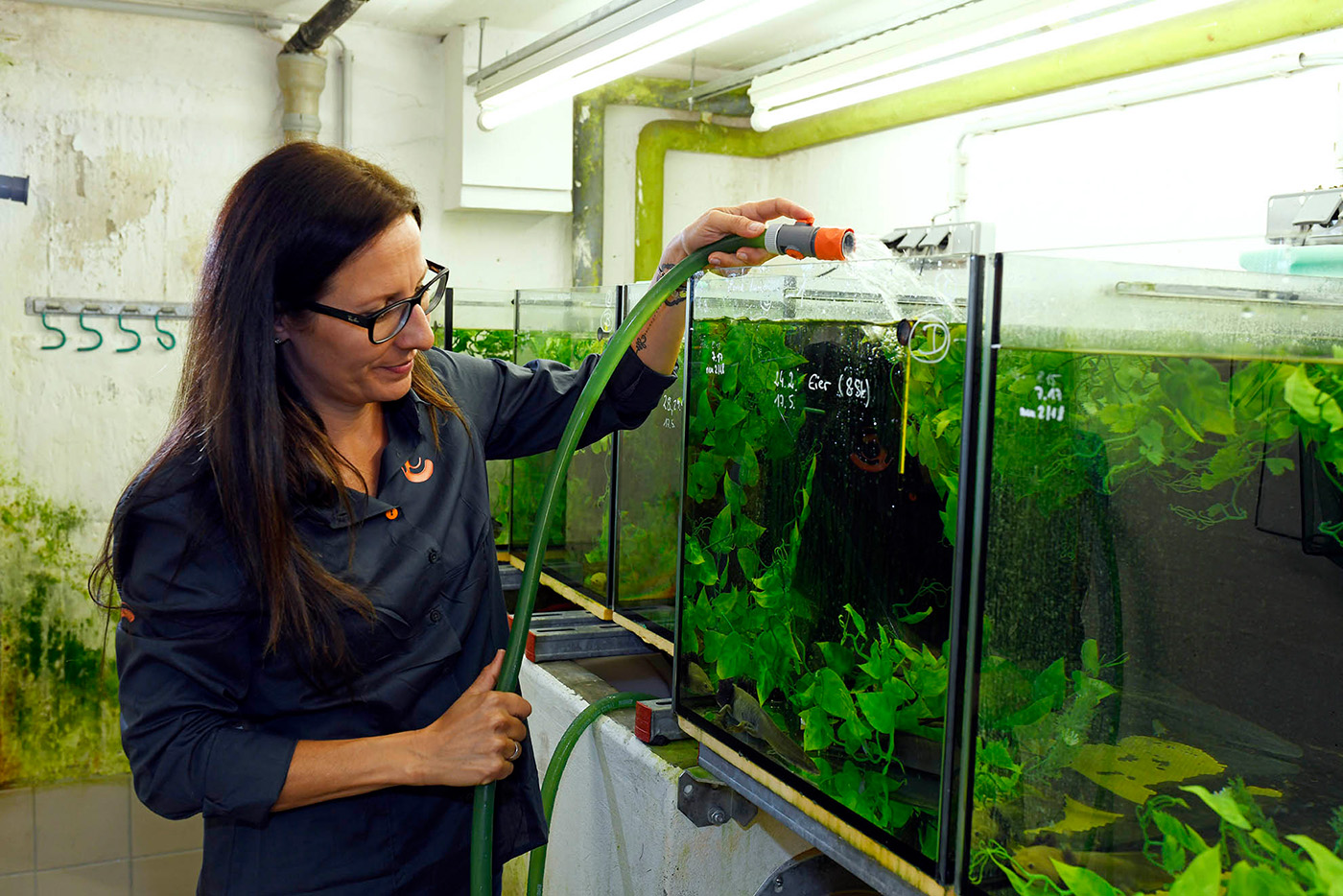
In the "salamander cellar" of Schönbrunn Zoo Doris looks after the endangered salamanders.
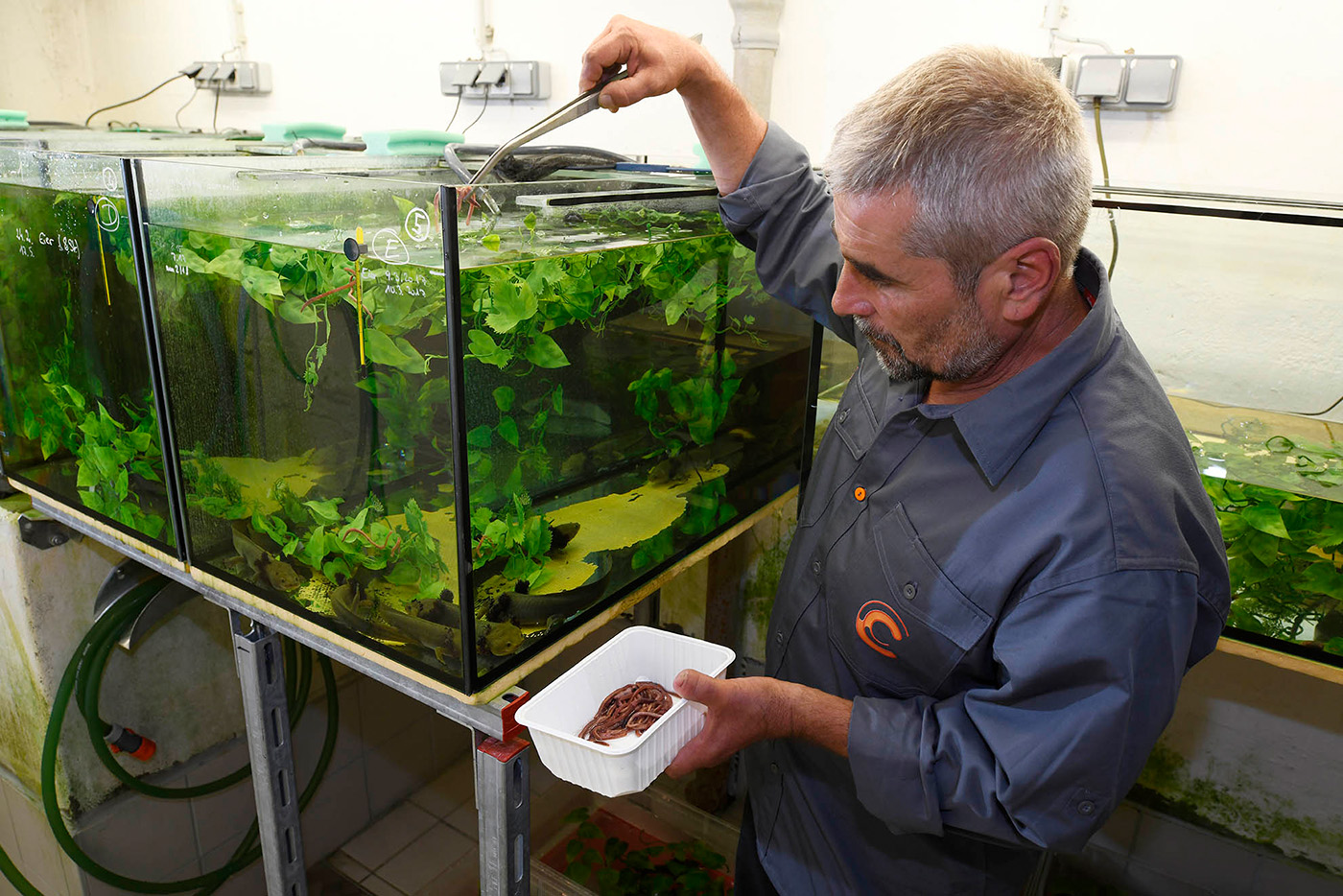
An easy life: In clean water, fed by Thomas, and without any danger from fish or fishermen, the Lake Pátzcuaro Salamanders live in a salamander paradise in the Vienna cellar.
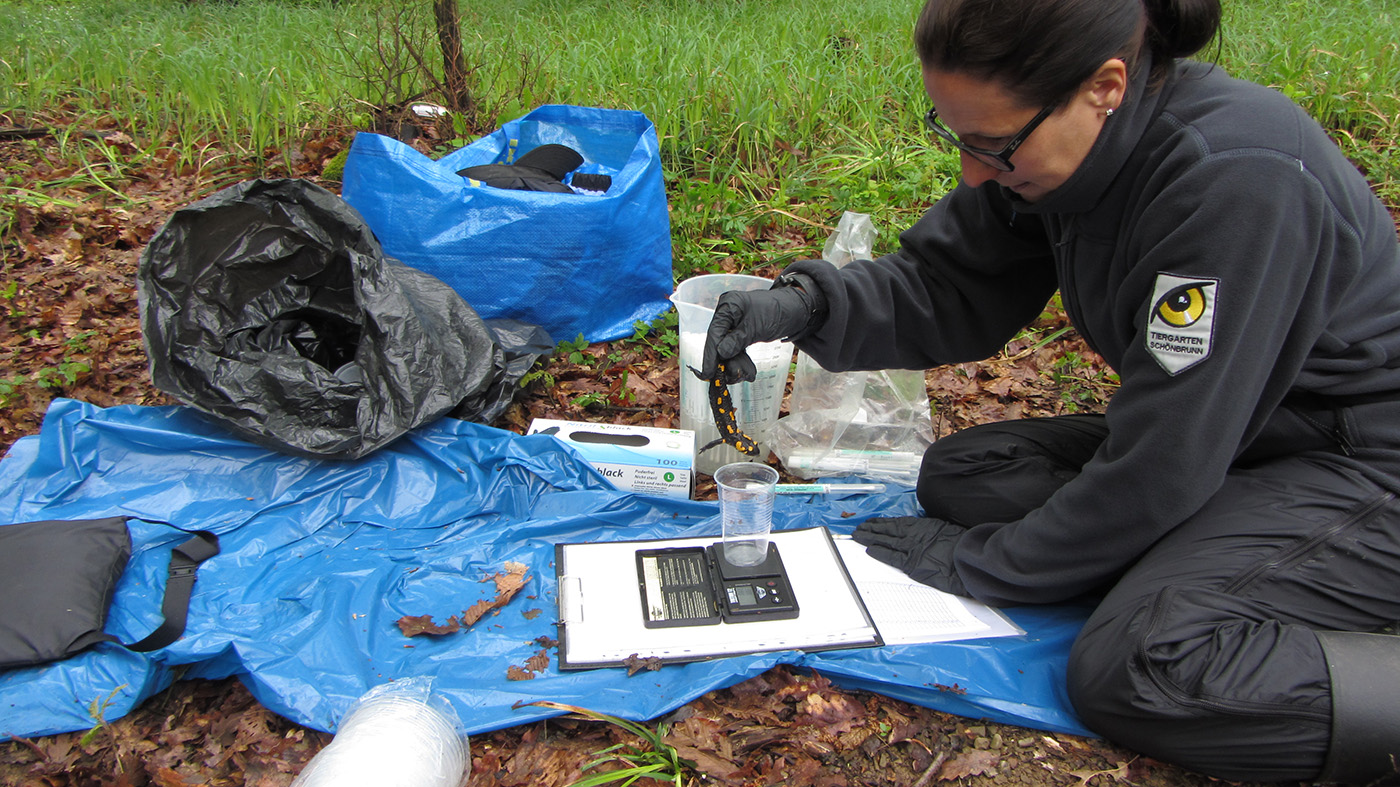
Doris also does field work with amphibians, as seen here, during a scientific study of fire salamanders in the woods around the Austrian capital.
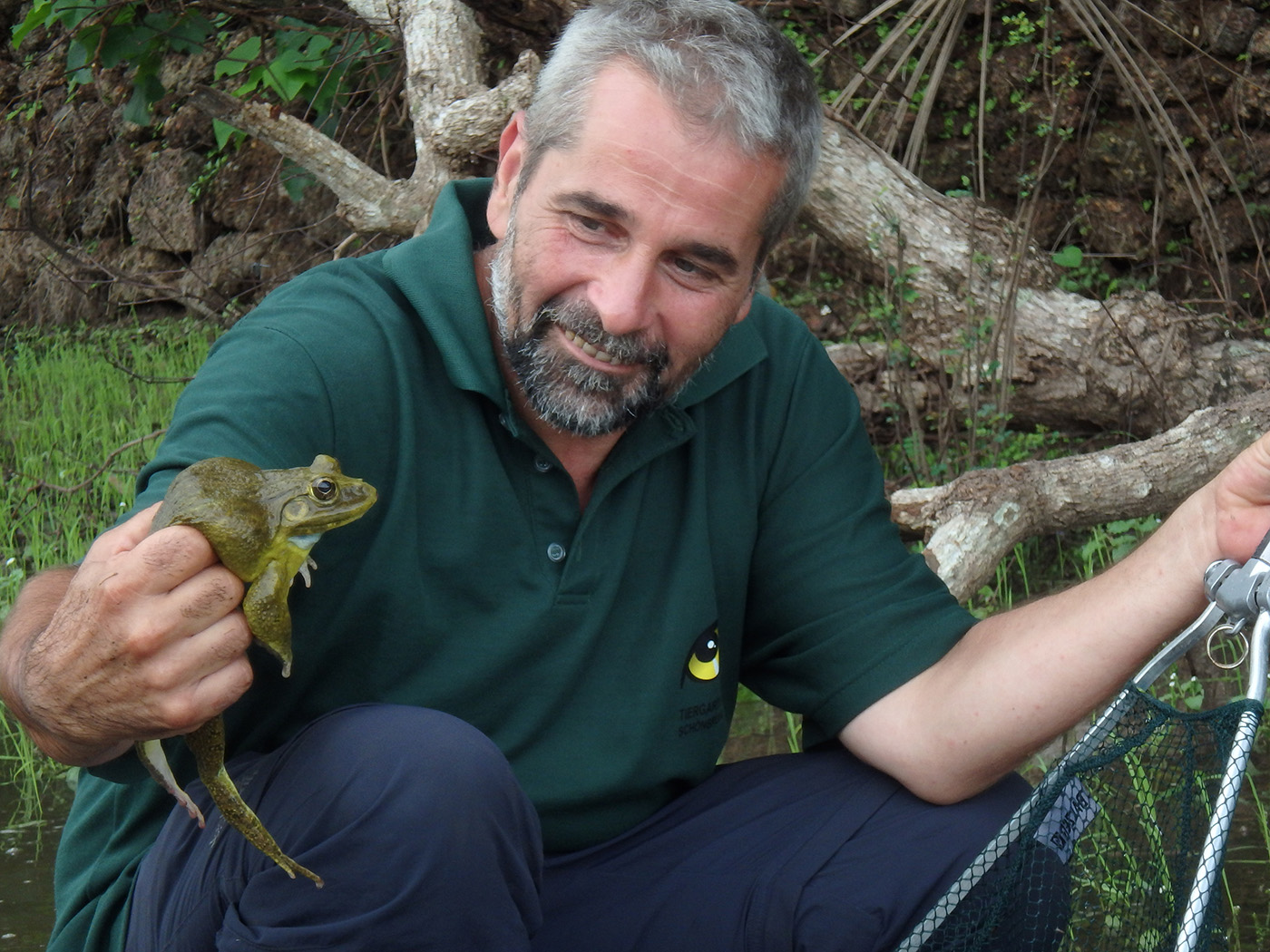
Missions all over the world: In India, Thomas is working with another amphibian species that is hunted for human consumption far too often: the Indian Bullfrog Hoplobatrachus tigerinusem...
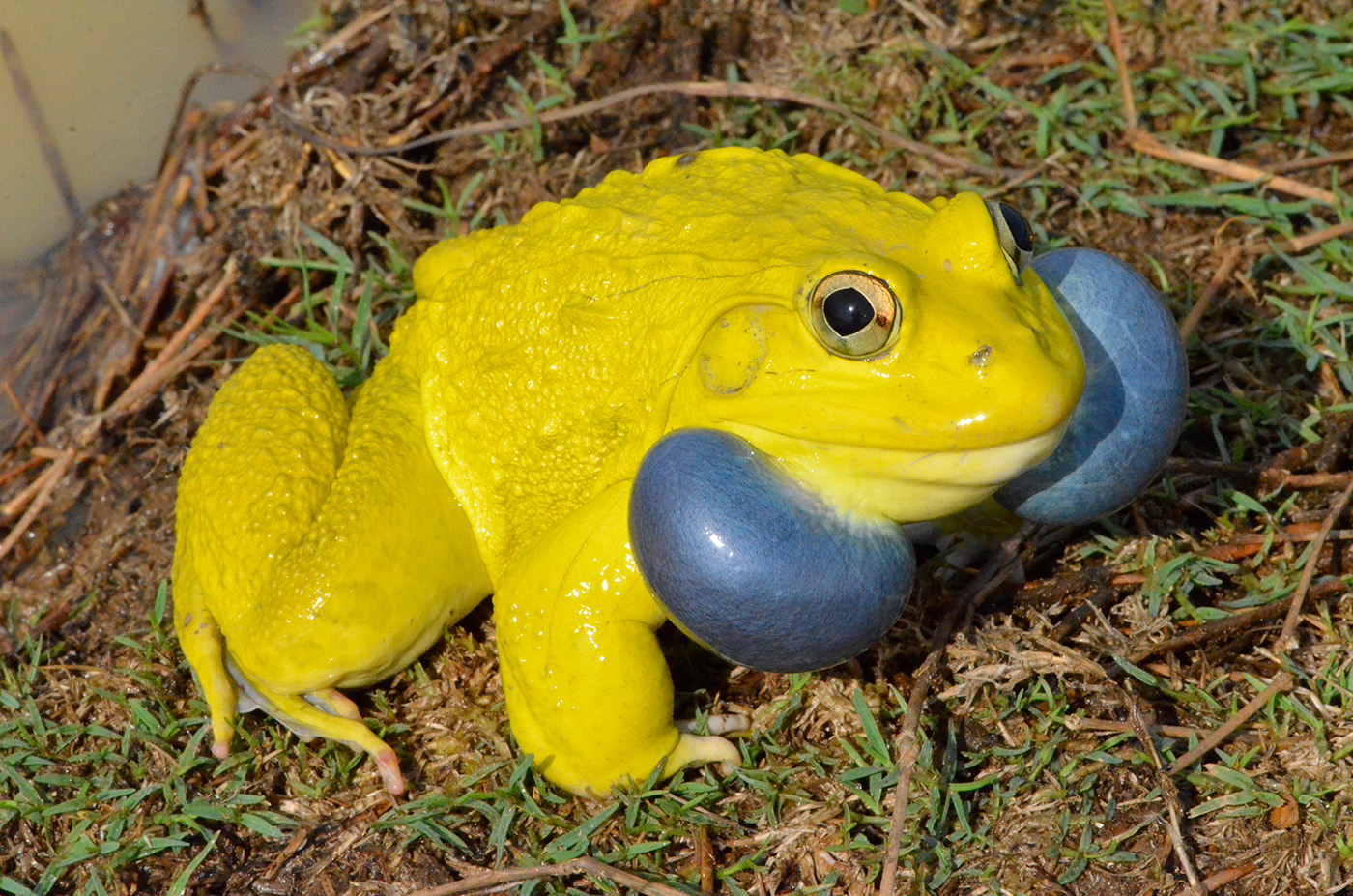
The male Indian Bullfrog only shows his true colors once a year for a few days – to impress the fairer sex.
Where love blossoms
Thomas is enthusiastic about salamanders and doesn’t mind the fact that many people consider them a little strange. He picked up his fascination with amphibians as a child, and later turned this passion into his profession at the Tiergarten Schönbrunn. Even though he is responsible for the planning and design of the facilities for all animal groups, he “can’t stay away from projects with amphibians at the Tiergarten.” Of course, he takes this passion home with him. There, too, he looks after a whole range of the slippery animals.
Call of Good Fortune
Doris was working on her PhD when her supervisor introduced her to foot-flagging frogs. “Walter Hödl asked me if I wanted to learn more about the frog that waved with its hind leg. Half a year later I was on my way to Borneo. For four months I sat under a waterfall and studied the animals.” Today, as a researcher at the Tiergarten, she studies amphibian communication methods as well as the threats that face European amphibians. At the University of Vienna she teaches an annual seminar on the “Biology of Tropical Amphibians.”
Zoo work = Research and Conservation
Working with private breeders has always been very important to Doris and Thomas, which is why they got involved with Citizen Conservation. “I’ve learned to let the animals ask the questions, but in order to do that, I have to take the time to watch them,” says Doris. “This often isn’t possible in daily professional life. Private frog lovers know their animals very well and have a wealth of experience that we can learn a lot from.” “And it would be crazy to miss out on these resources, which most zoos don’t have anymore,” adds Thomas. “Citizen Conservation offers frog lovers the chance to play an essential role in the conservation of biodiversity. With pathos, too: We’re saving the world – we won’t be able to do it, but we’ll try anyway.”
